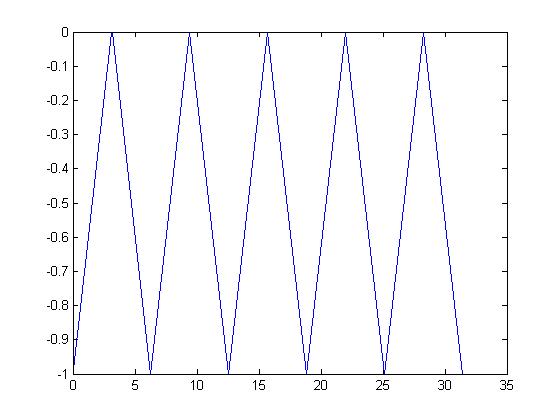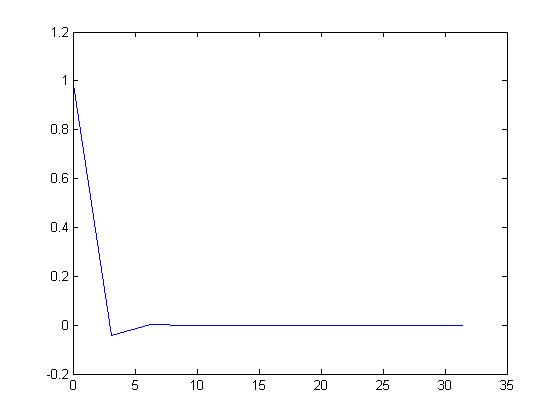Periodic Functions
A Continuous Time signal is said to be periodic if there exists $ \ T > 0 $ such that $ \ x(t+T)=x(t) $
A Discrete Time signal is said to be periodic if there exists $ \ N > 0 $ (where N is an integer) such that $ \ x[n+N]=x[n] $
An example of a CT periodic signal is $ x(t) = sawtooth(t) $:
As you can see the function has a fundamental period of two Pi. Therefore any multiple of two Pi is a period.
Non-periodic Functions
A Continuous Time signal is said to be non-periodic if there is no value of $ T > 0 $ that satisfies $ x(t+T)=x(t) $
A Discrete Time signal is said to be non-periodic if there is no value of $ N > 0 $ (where N is an integer) that satisfies$ x[n+N]=x[n] $
An example of a non-periodic continuous time signal would be $ \ x(t) = e^{(-1 + j)t} $. This goes to show that not all complex exponential functions are periodic.
Here is what the function looks like when graphed:
As you can see from the graph the function is non-periodic.



